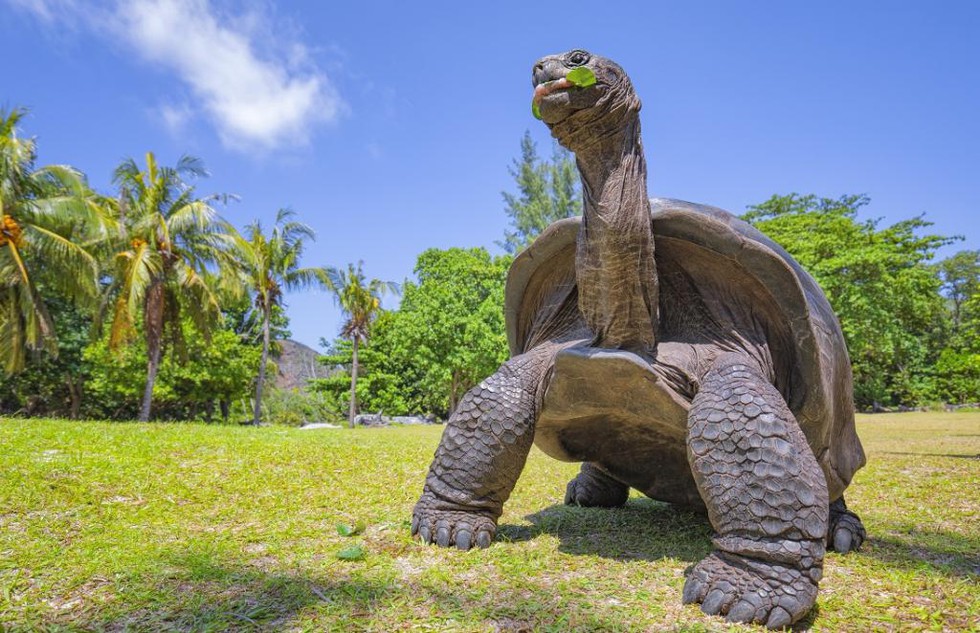About Aldabra giant tortoise:
- It is the second-largest species of land tortoise in the world, after the Galapagos giant tortoise (Chelonoidis nigra).
- It can live for 100 years and has a fascinating history.
- This tortoise evolved from ancestors of Aldabrachelys abrupta, one of two giant tortoises that inhabited Madagascar for 15 million years.
- Four million years ago, the Aldabrachelys abruptalineage migrated, likely via a combination of drifting with floating vegetation and assisted by their natural buoyancy and good swimming abilities, to Seychelles.
- These are endemic to the Aldabra Atoll of the Seychelles, an archipelago nation in the western Indian Ocean about 930 miles east of Africa and northeast of Madagascar.
- Habitat:
- These are terrestrial and occur in a wide variety of habitats, including scrub forests, mangrove swamps, and coastal dunes and beaches, each with their respective vegetation.
- The largest populations of tortoises are found on grasslands called "platins."
- Due to prolonged periods of heavy grazing, a habitat known as “tortoise turf”, consisting of a variety of grasses, has developed in certain areas.
- Conservation status
- IUCN: Vulnerable
- CITES: Appendix II
